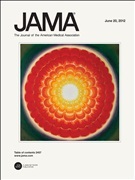
PEDIATRIC ORTHOPAEDICS
Lorazepam vs. Diazepam in the treatment of Pediatric Status Epilepticus
This report has been verified
by one or more authors of the
original publication.
JAMA. 2014 Apr 23-30;311(16):1652-60
Three hundred and ten patients, aged 3 months to 18 years, exhibiting tonic-clonic status epilepticus were randomized to determine a superior treatment between lorazepam and diazepam. Goals of treatment were cessation of status epilepticus by 10 minutes, without recurrence within 30 minutes. Patients were evaluated over 4 hours after treatment, and up to 24 hours, or until hospital discharge for safety and secondary outcome analysis. The evidence presented in this study indicated that lorazepam and diazepam were comparable in the treatment of status epilepticus in terms of all primary outcomes analyzed in this trial. Lorazepam patients were, however, more likely to be sedated compared to diazepam patients.
Unlock the full ACE Report
You have access to {0} free articles per month.Click below to unlock and view this {1}
Unlock NowCritical appraisals of the latest, high-impact randomized controlled trials and systematic reviews in orthopaedics
Access to OrthoEvidence podcast content, including collaborations with the Journal of Bone and Joint Surgery, interviews with internationally recognized surgeons, and roundtable discussions on orthopaedic news and topics
Subscription to The Pulse, a twice-weekly evidence-based newsletter designed to help you make better clinical decisions
Exclusive access to original content articles, including in-house systematic reviews, and articles on health research methods and hot orthopaedic topics
Or upgrade today and gain access to all OrthoEvidence content for just $1.99 per week.
Already have an account? Log in


Subscribe to "The Pulse"
Evidence-Based Orthopaedics direct to your inbox.
{0} of {1} free articles
Become an OrthoEvidence Premium Member. Expand your perspective with high-quality evidence.
Upgrade Now













































































